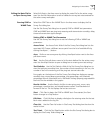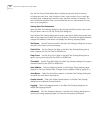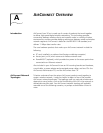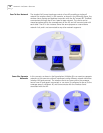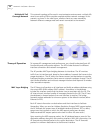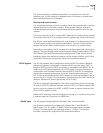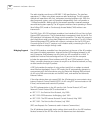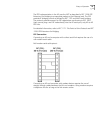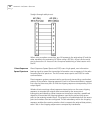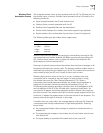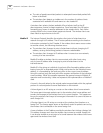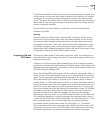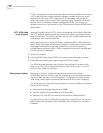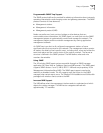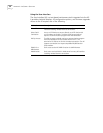
Theory of Operation 25
Wireless Client
Association Process
APs recognize wireless clients as they associate with the AP. The AP keeps a list of
the wireless clients it services. Wireless clients associate with an AP based on the
following conditions:
■
Signal strength between the AP and wireless client
■
Wireless clients currently associated with the AP
■
Wireless client Supported Rate (see the table below)
■
Positive match between the wireless client and encryption keys (optional)
■
Positive wireless client authorization by the Access Control List (optional)
The following table gives the wireless client support rates:
Wireless clients perform preemptive roaming by intermittently scanning for APs
and associating with the best available AP. Before roaming and associating with
APs, wireless clients perform scans to collect AP statistics and determine the
direct-sequence channel used by the AP.
Scanning is a periodic process where the wireless client sends out messages on all
frequencies defined by the country code. The statistics enable a wireless client to
reassociate by synchronizing its frequency to the AP. The wireless client continues
communicating with that AP until it needs to switch cells or roam.
Wireless clients perform scans at start-up. In a scan, a wireless client uses
a sequential set of channels as the scan range. For each channel in range,
the wireless client tests for
Clear Channel Assessment
(CCA). When a
transmission-free channel becomes available, the wireless client broadcasts a
probe with the wireless LAN service area and the broadcast HSA_ID. An
AP-directed probe response generates a wireless client
Acknowledgment
(ACK)
and the addition of the AP to the AP table with a proximity classification. An
unsuccessful AP packet transmission generates another wireless client probe on
the same channel. If the wireless client fails to receive a probe response within the
time limits, it repeats the probe process on the next channel in the sequence. This
process continues through all channels in the range.
A wireless client can roam within the coverage area by switching APs. Roaming
is transparent and virtually instantaneous in high-level applications. Roaming
occurs when:
■
An unassociated wireless client attempts to associate or reassociate with an
available AP.
■
The supported rate changes or the wireless client finds a better transmit rate
with another AP.
■
The signal quality
of a potential AP exceeds that of the current AP.
Data Rate Requirement
11 Mbps Optional
5.5 Mbps Optional
2 Mbps Optional
1 Mbps Required



